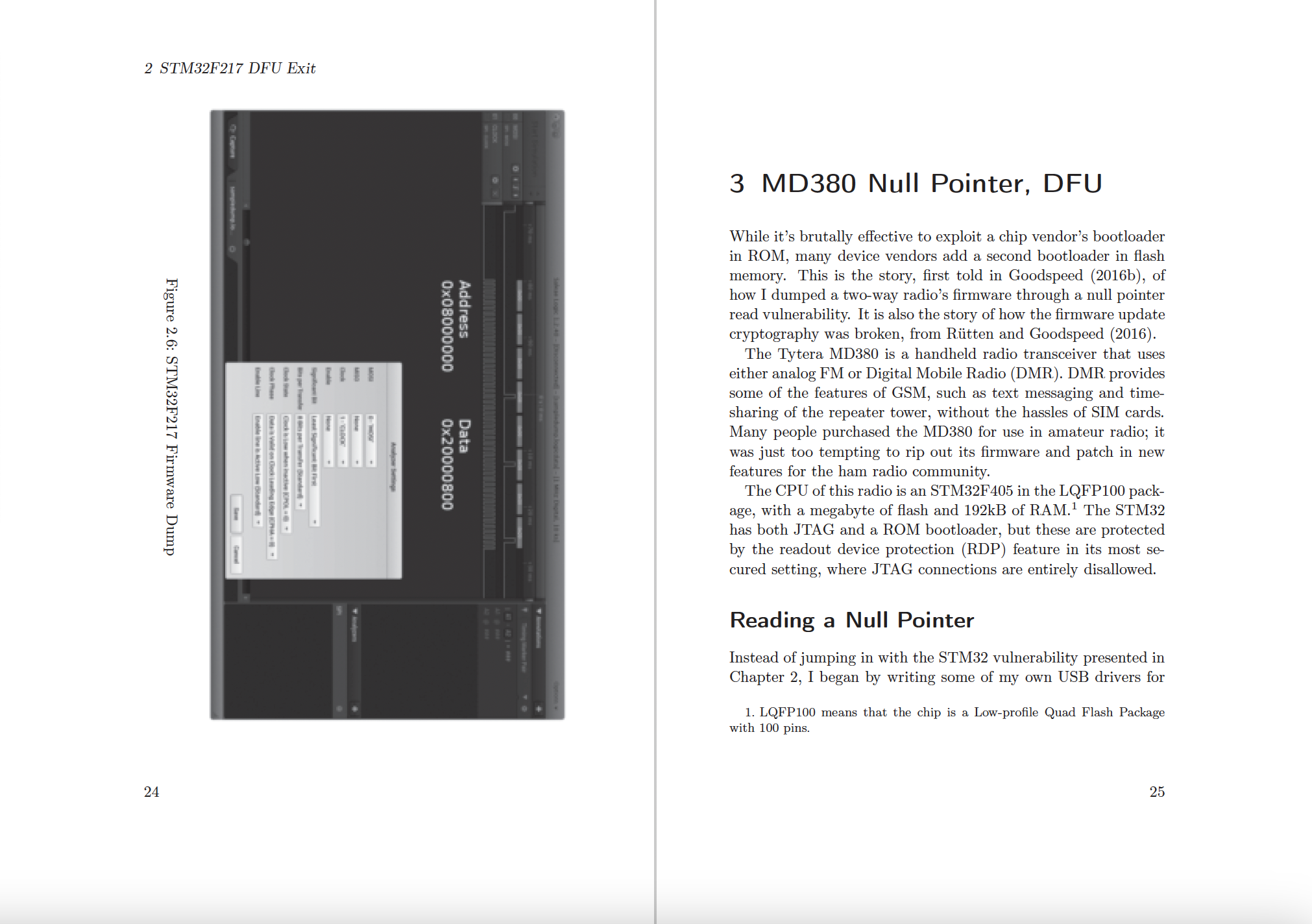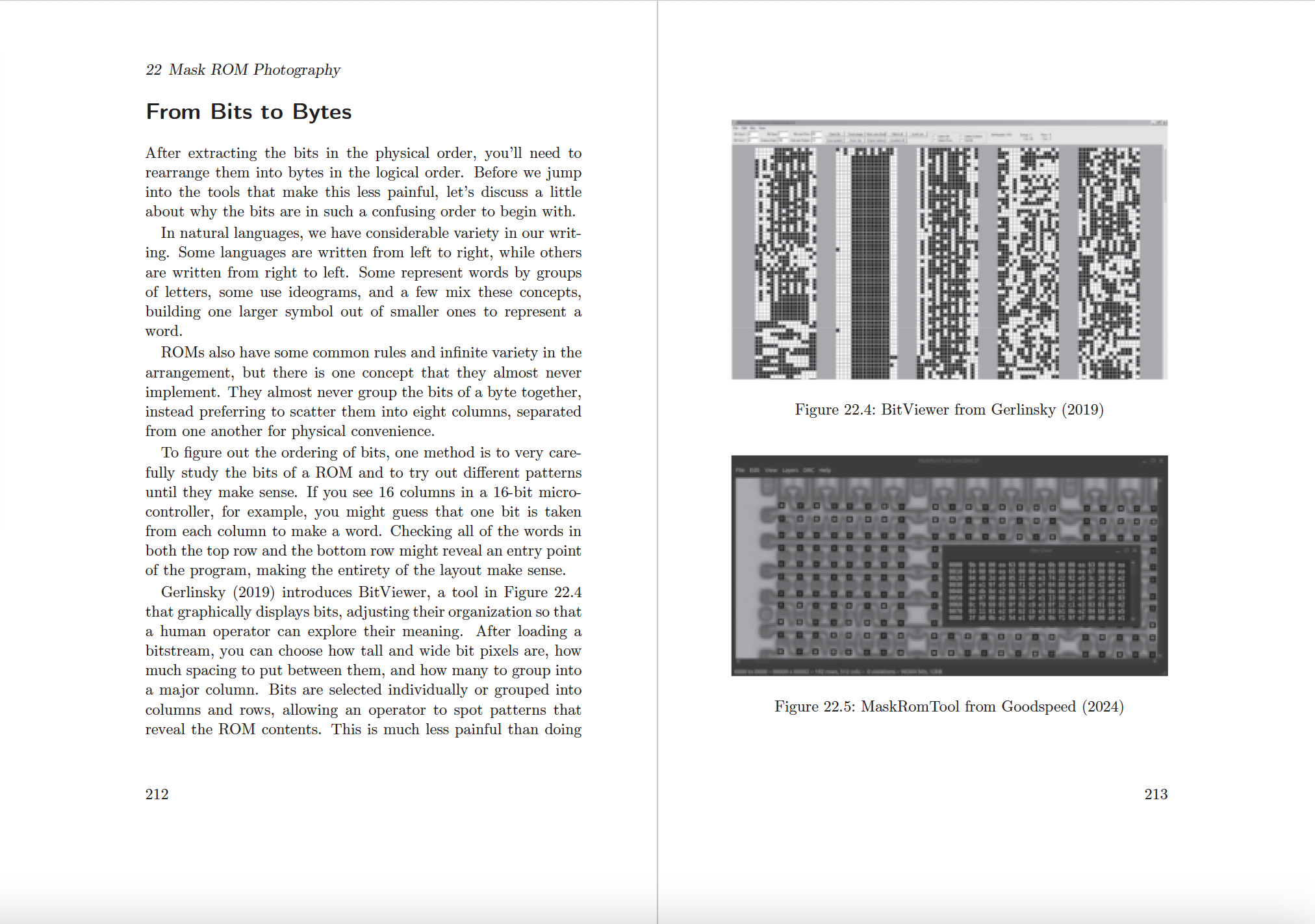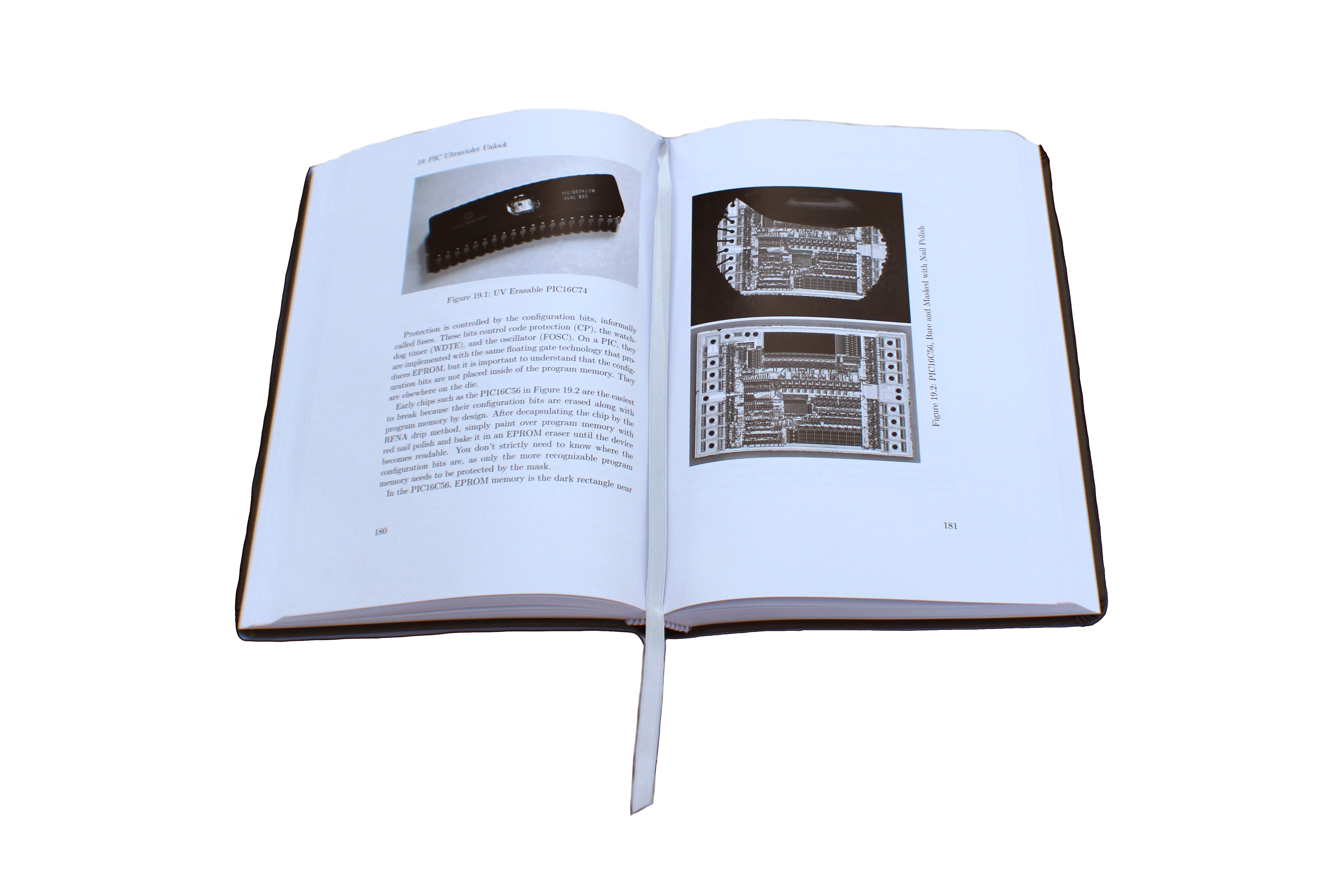Introduction
Chapter 1: Basics of Memory Extraction
Chapter 2: STM32F217 DFU Exit
Chapter 3: MD380 Null Pointer, DFU
Chapter 4: LPC1343 Call Stack
Chapter 5: Ledger Nano S, 0xF00DBABE
Chapter 6: NipPEr Is a buTt liCkeR
Chapter 7: RF 430 Backdoors
Chapter 8: Basics of JTAG and ICSP
Chapter 9: nRF51 Gadgets in ROM
Chapter 10: STM32F0 SWD Word Leak
Chapter 11: STM32F1 Interrupt Jigsaw
Chapter 12: PIC18F452 ICSP and HID
Chapter 13: Basics of Glitching
Chapter 14: MC13224, the Simplest Fault Injection
Chapter 15: LPC1114 Bootloader Glitch
Chapter 16: nRF52 APPROTECT Glitch
Chapter 17: STM32 FPB Glitch
Chapter 18: Chip Decapsulation
Chapter 19: PIC Ultraviolet Unlock
Chapter 20: MSP430 Paparazzi Attack
Chapter 21: CMOS VLSI Interlude
Chapter 22: Mask ROM Photography
Chapter 23: Game Boy Via ROM
Chapter 24: Clipper Chip Diffusion ROM
Chapter 25: Nintendo CIC and Clones
Chapter A: More Bootloader Vulns
Chapter B: More Debugger Attacks
Chapter C: More Privilege Escalation
Chapter D: More Invasive Attacks
Chapter E: More Fault Injections
Chapter F: More Test Modes
Chapter G: More ROM Photography
Chapter H: Unsorted Attacks
Chapter I: Other Chips Thank you, kindly.
Bibliography
Index
View the Copyright page
View the detailed Table of Contents
View the Index







